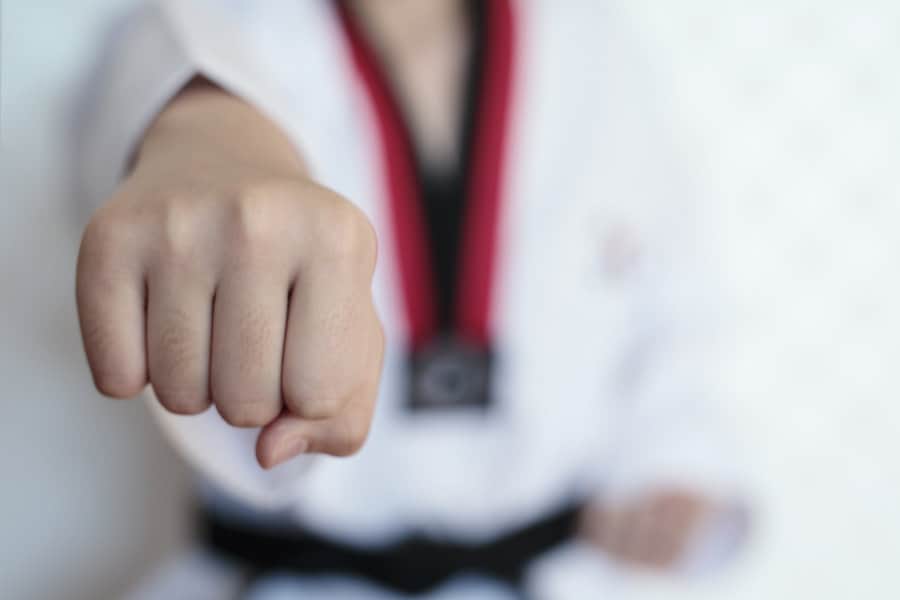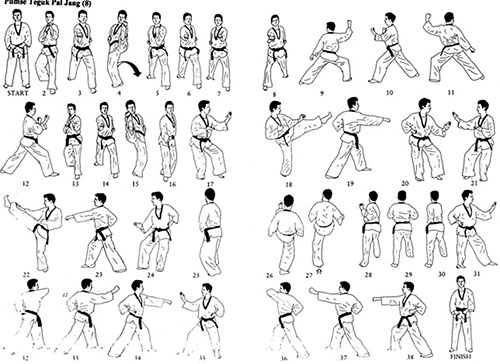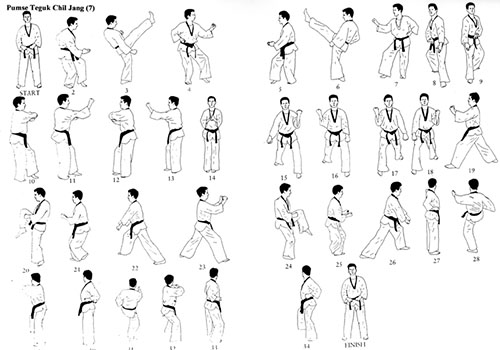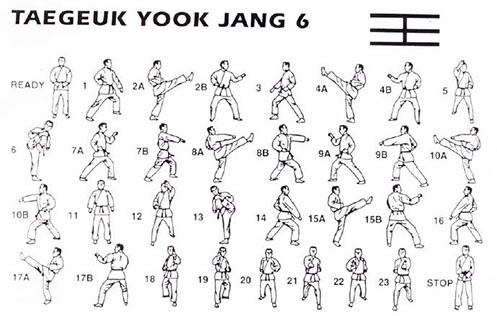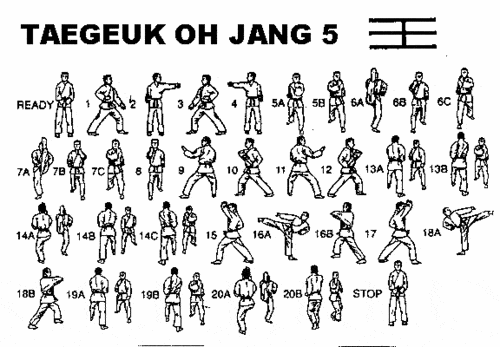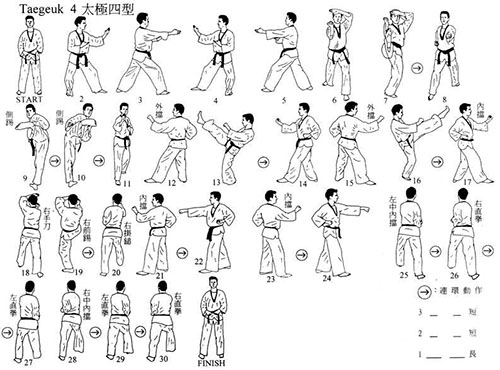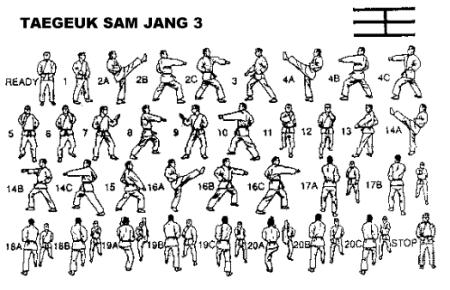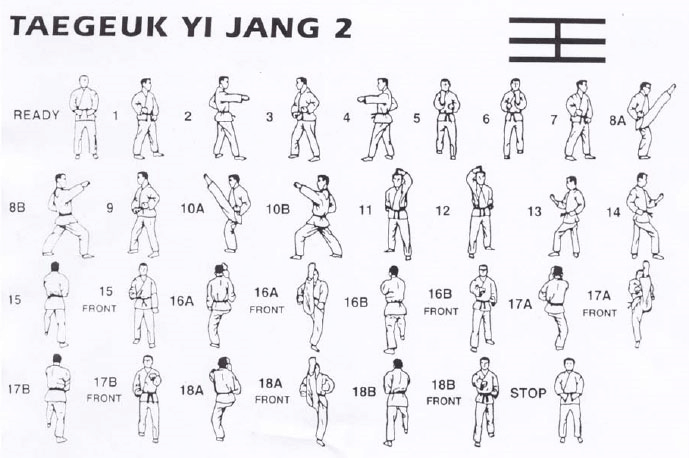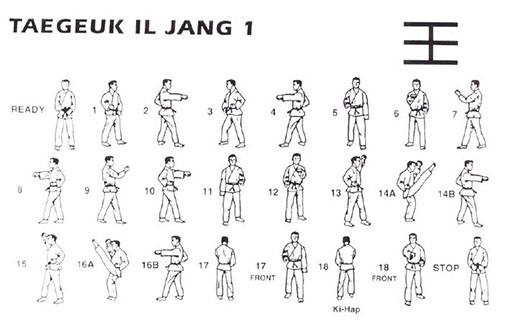In Taekwondo, they have a wide variety of defensive blocks(Makgis) that are taught in curriculums. There is a block available for nearly every possible attack a person can use to defend themselves. So, what are …
What is A TaeKwonDo Poomsae? A Guide To Form Training
In TaeKwonDo forms are called Poomsae and the practice and development of Poomsae skills is the soul of Taekwondo practice. If you are considering to start training in TaeKwonDo or perhaps you have already have …
WTF TaeKwonDo High Red Belt Form | Poomsae Taegeuk Pal Jang
The TaeKwonDo Form 8 or Poomsae Taegeuk Pal Jang applies the Gon principle of Palgwe. Gon symbolizes the earth, the source of life. Keon is the father, Gon is the mother. The earth is where …
WTF TaeKwonDo Red Belt Form | Poomsae Taegeuk Chil Jang
The WTF TaeKwonDo Red Belt Form or Poomsae Tageuk Chil Jang applies the Gan principle of Palgwe. Gan means “top stop”, and symbolizes a mountain. It is male, taciturn and steady. Like a mountain, it …
WTF Taekwondo Blue Belt Form| Poomsae Taegeuk Yuk Jang
The TaeKwonDo Form 6 or Poomsae Taegeuk Yuk (Yook) Jang applies to the principle of Gam of Palgwe. Gam is male, and it symbolizes North. Through Gam, we learn that we can overcome every difficulty …
WTF TaeKwonDo Blue Belt Form | Poomsae Taegeuk Oh Jang
Taw Kwon Do Form 5 or Poomsae Taegeuk O Jang is a series of actions applying the Seon of Palgwe. Seon is female, and symbolizes the wind. Although there are horrible and destructive winds, such …
WTF TaeKwonDo Green Belt Form | Poomsae Taegeuk Sa Jang
Green Belt Form – Taegeuk Sa Jang The Tae Kwon Do Form 4 or also known as Taegeuk Sa Jang applies the principle of Jin of Palgwe where Jin is male. It represents thunder, which …
WTF TaeKwonDo Green Belt Form |Poomsae Taegeuk Sam Jang
Green Belt Form – Taegeuk Sam Jang The Tae Kwon Do Poomsae 3 or more formally known as the Taegeuk Sam Jang form represents the symbol of Ri meaning fire (hot & bright) encouraging the …
WTF TaeKwonDo Yellow Belt Form | Poomsae Taegeuk Ee Jang
Tae Kwon Do Yellow Belt Form Taegeuk Ee Jan(also spelled Taegeuk Yi) is the second form in a series of 8. Its meaning is to be strong inside but fragile on the outside. The movements …
WTF TaeKwonDo White Belt Form | Taegeuk Il Jang
White Belt Form – Taegeuk Il Jang Taekgeuk Il Jang or more informally known number as Tae Kwon Do Form 1 is the very first of a total of 8 poomsae’s or forms that is …
- Page 1 of 2
- 1
- 2


